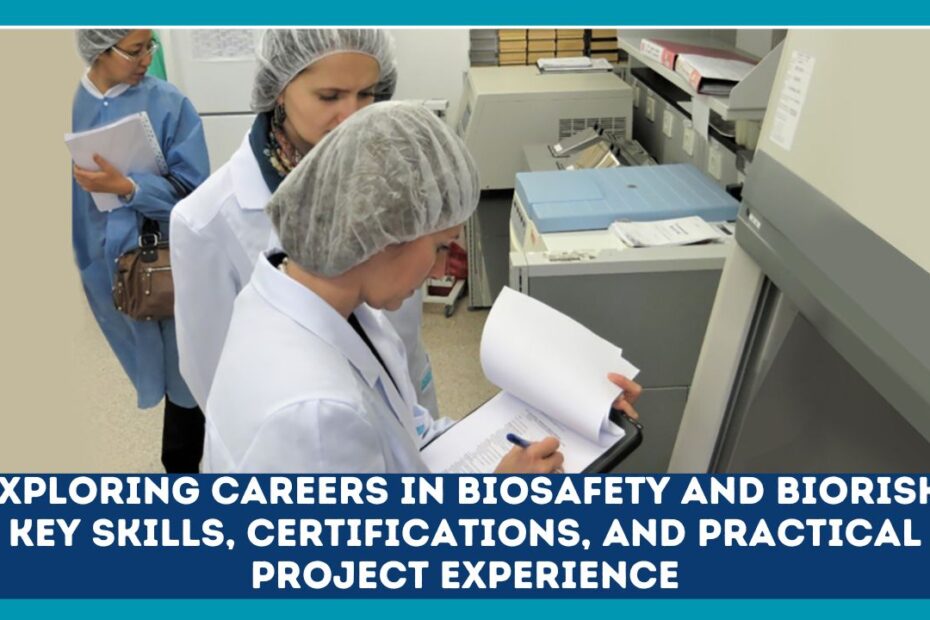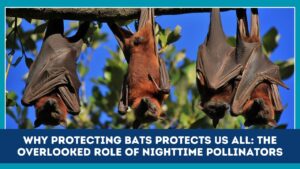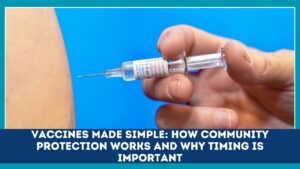In an era where biosafety and biorisk management are more critical than ever, specialized professionals are needed to safeguard both public health and scientific integrity.
From designing containment protocols to ensuring select-agent compliance, these careers demand a fusion of technical skill, regulatory knowledge, and practical experience.
This article delves into the essential skills, key certifications, relevant standards, salary expectations, and practical projects that pave the way for a thriving career in this dynamic field.
Core Competencies & Practical Expertise
Essential Skills for Biosafety Professionals
- Risk Assessment: Ability to evaluate and mitigate risks associated with hazardous biological agents.
- Biorisk Management: Implementing ISO-35001 frameworks to systematically identify, assess, control, and monitor biological hazards.
- Laboratory Practices: Proficiency in biosafety procedures per BMBL-6 guidelines—handling pathogens safely, designing biosafety cabinets, and executing hazard controls.
- Select Agent Program Compliance: Understanding federal regulations governing high-consequence agents and toxins.
- Accreditation Knowledge: Familiarity with AAALAC accreditation for animal research ethics and NSF/ANSI 49 for biosafety cabinet certification.
- Technical Expertise: Operating and testing biosafety cabinets as an NSF-accredited field certifier, ensuring laboratory equipment meets strict standards.
- Communication & Training: Crafting SOPs, delivering training, and liaising across multidisciplinary teams to maintain biosafety compliance.
Practical Project Experience You Should Pursue
- Performing full risk assessments and drafting tailored mitigation strategies.
- Designing and implementing biosafety protocols aligned with BMBL-6 best practices.
- Managing select-agent inventories and regulatory documentation.
- Leading or supporting biosafety cabinet certification, including executing velocity and airflow tests.
- Assisting in institutional AAALAC accreditation efforts, ensuring humane and regulatory compliance in animal-based research.
Key Certifications & Regulatory Frameworks
The table below highlights the most recognized credentials and standards shaping this career path:
| Certification / Standard | What It Covers | Relevance |
|---|---|---|
| ABSA RBP / CBSP | Registered or Certified Biosafety Professional credentials through ABSA | Establishes credibility and depth of expertise. |
| IFBA Professional Certification | Globally recognized certification in biorisk management (2024-updated) | Validates skills in international biorisk frameworks. |
| ISO-35001 | Standard for biorisk management systems in labs and related institutions | Provides structured risk control guidelines. |
| BMBL-6 (NIH) | Advisory for biosafety practices in microbiological and biomedical labs | Recognized best practices for pathogen handling. |
| NSF/ANSI 49 | Biosafety cabinet testing criteria | Essential for lab safety equipment validation. |
| NSF Field Certifier Accreditation | Certification to perform field tests on biosafety cabinets | Required for hands-on equipment compliance. |
| Select Agent Program Training | Federal compliance training on handling high-risk pathogens | Critical for regulatory adherence to U.S. government mandates. |
| AAALAC Accreditation Engagement | Standards for animal care and use in research | Demonstrates ethical and regulatory rigor in animal-based studies. |
Career Outlook and Compensation
- Biosafety Officer Salaries: As of mid-2025, the average U.S. salary stands at approximately US$74,086 per year (about US$35.62 per hour).⁽¹⁾ Salaries vary significantly; for instance, many positions fall within the US$51,000 range at the 25th percentile.⁽¹⁾
- Job Growth Trends: Demand increases steadily in sectors like clinical research labs, industrial biotechnology, public health agencies, and academic institutions. Rising funding in biocontainment and pandemic preparedness fuels job opportunities.
Compliance, Standards & Evolving Practices
Understanding Select Agent Regulations
Professionals must navigate federal guidelines governing the secure handling, transfer, and record-keeping of regulated biological agents and toxins.
Applying ISO-35001
This standard provides a structured methodology for risk-based biosafety systems encompassing hazard identification, risk evaluation, and monitoring across institutional processes.
BMBL-6 Best Practices
The 6th edition offers updated recommendations tailored to modern laboratory environments, focusing on containment procedures and proper response mechanisms.
NSF Biosafety Cabinet Standards
The NSF/ANSI 49 standard ensures physical and functional integrity of biosafety cabinets, protecting both personnel and the environment. Field certifiers are trained to assess compliance rigorously.
AAALAC Accreditation
Institutions that conduct animal-based research benefit from voluntary AAALAC accreditation, signifying high ethical and welfare standards while enhancing public trust and funding eligibility.
Building Hands-On Project Experience
Practical experience differentiates candidates in biosafety careers. Actionable steps include:
- Assisting in full risk assessments and SOP development for laboratory operations.
- Supporting or leading field certification of biosafety cabinets—involving hands-on air-flow measurement and calibration.
- Contributing to AAALAC self-assessments or accreditation submissions at research facilities.
- Designing biosafety protocols for novel pathogens or emerging infectious diseases, adhering to BMBL and ISO frameworks.
- Managing select agent inventories, ensuring compliance with the Federal Select Agent Program’s protocols and training.
Strategies to Launch and Advance Your Career
- Academic Preparation: Pursue a bachelor’s or master’s degree in microbiology, biosafety, biotechnology, or public health. Courses in containment and epidemiology are especially valuable.
- Early Certification: Begin by obtaining foundational credentials such as an IFBA certificate or ABSA’s RBP/CBSP.
- Internships & Fellowships: Seek positions in biosafety offices, public health agencies, or institutional compliance departments.
- Professional Networking: Attend industry conferences (e.g., ABSA seminars, IFBA summits), join listservs, and connect with certified professionals.
- Continuing Education: Stay current with evolving guidelines in pathogen handling, technology innovations, and regulatory updates.
A career in biosafety and biorisk management offers a dynamic intersection of science, safety, and public health.
By mastering key skills, securing reputable certifications, engaging in hands-on projects, and staying well-versed in regulatory frameworks, you position yourself for success in an essential and growing field.
Whether your passion lies in lab safety, policy compliance, or equipment certification, the demand for informed, competent professionals has never been greater—and the impact of your work could be profound.
Frequently Asked Questions
1. What is the average salary for a biosafety officer in the U.S.?
As of mid-2025, the national average salary is approximately US$74,086 per year (about US$35.62 per hour), with many roles offering around US$51,000 at the 25th percentile mark.
2. Which certifications are most valuable for biosafety career advancement?
Key credentials include ABSA’s RBP/CBSP, the IFBA professional certification, NSF/ANSI 49 field certifier accreditation, and participation in AAALAC accreditation processes—each demonstrating proficiency in distinct facets of biosafety.
3. How can I gain practical experience in biosafety?
Engage in internships or volunteer roles in laboratory biosafety offices, support biosafety cabinet certifications, assist with risk assessments, participate in AAALAC accreditation exercises, and work on protocols aligned with BMBL-6 and ISO-35001 frameworks.



